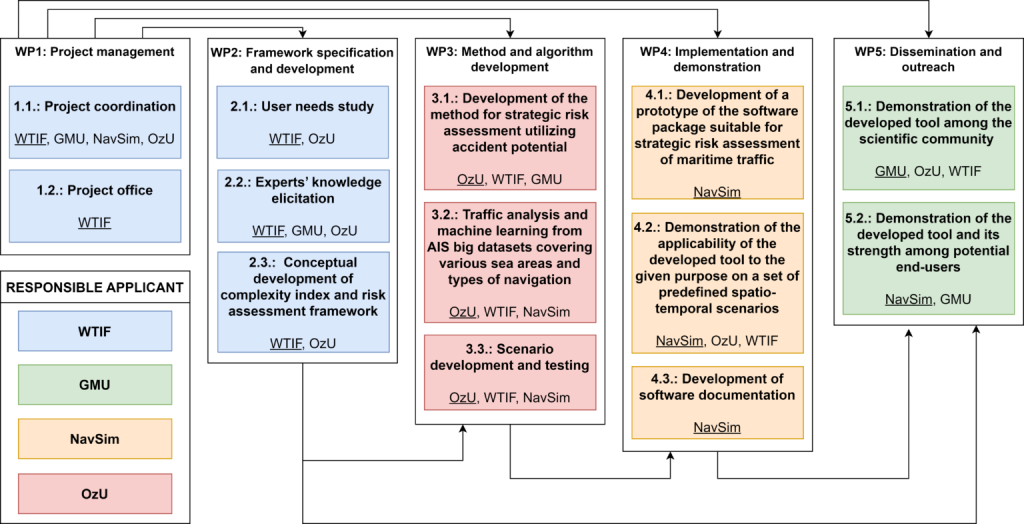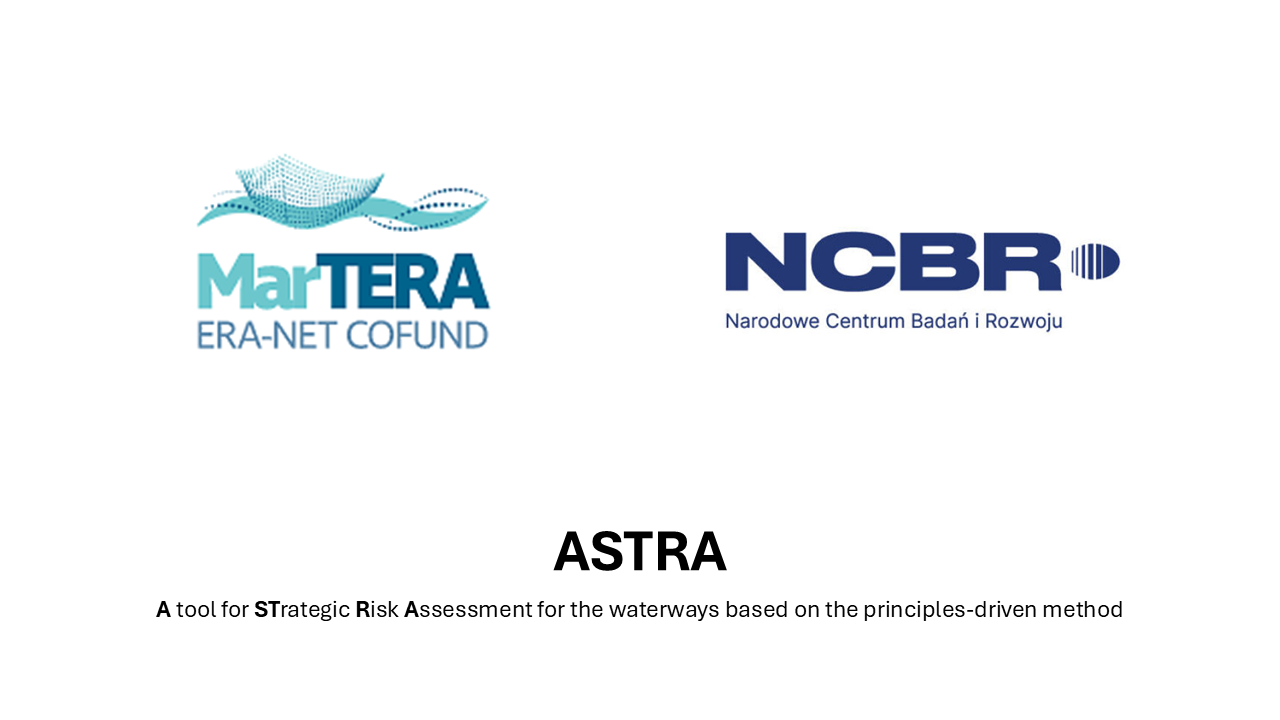ASTRA (A tool for STrategic Risk Assessment for the waterways based on the principles-driven method)
Maritime authorities need to run periodic risk assessment ensuring the risk of accident remains within the acceptable boundaries. However, the majority of the methods used nowadays consider maritime traffic in a static or quasi-static manner, linking the accident probability with traffic density and individual ship characteristics.
The influence of traffic or waterway complexity and environmental factors on human performance is often neglected. Additionally, those methods often focus on open sea and coastal navigation, while they exclude inland and restricted navigation.
To fill this knowledge gap, the consortium is attempting to develop a novel approach to modelling the probability of accidents on waterways, based on first principles inspired by human performance. To this end, factors affecting navigator performance are being identified and measured through a literature review, expert knowledge gathering and Big Data analysis.
As a result, a novel scientific method together with a software tool for strategic risk assessment for waterways will be developed.
This project is funded by the Polish National Centre for Research and Development (NCBiR) in the frame of MarTERA initiative, an ERA-NET Cofund supported by the European Union’s Horizon 2020 research and innovation program. Contract no. MarTERA4/1/10/ASTRA/2023.
Consortium partners
The project consortium consists of academic (WTI, GMU, OU) and industrial partners from Poland and Turkey. The academic partners have extensive experience in accident probability modelling and strategic risk assessment for waterways. One software company (NavSim) has extensive experience in the development and commissioning of nautical and maritime software.
- Waterborne Transport Innovation – Poland
- Gdynia Maritime University – Poland
- NavSim Technology – Poland
- Özyeğin University – Turkey
Objectives
- ASTRA projects develops a novel method and tool for all parties interested in diagnostic assessment of maritime traffic.
- The tool will measure the risk with the accident potential for a given sea area based on relevant and observable variables.
- The latter, being the main drivers for the human performance in accident evasive actions, encompass: complexities of waterway, traffic and environment, as well as ship manoeuvrability.


